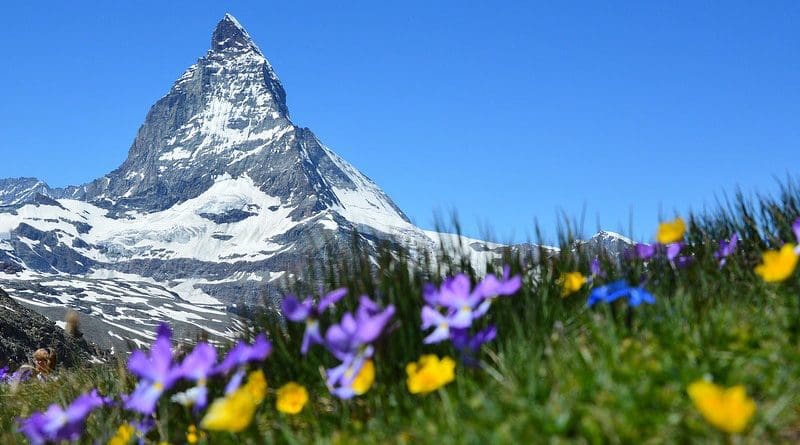In The Alps Climate Change Affects Biodiversity
The European Alps is certainly one of the most scrutinized mountain range in the world, as it forms a true open-air laboratory showing how climate change affects biodiversity.
Although many studies have independently demonstrated the impact of climate change in the Alps on either the seasonal activity (i.e. phenology) or the migration of plants and animals, no systematic analysis has been carried out on both consequences simultaneously.
A European team of ecologists1, including Jonathan Lenoir, CNRS Researcher in the research unit Écologie et Dynamique des Systèmes Anthropisés (CNRS/University of Picardie Jules Verne), has just published a review that quantifies seasonal changes and elevational movements of more than 2,000 species of plants, animals and fungi that live in the Alps.
This review shows that species have shifted their life cycles (e.g. bud burst for plants or nesting for birds) earlier during the season2 and their distribution higher along the elevational gradient, but that the average velocity of range shift3, which varies from species to species, is often lagging behind the velocity of climate change.
These results, partly based on citizen science data, were published online in Biological Reviews.
Notes:
1 The laboratories: WSL Swiss Federal Institute for Forest, Snow and Landscape Research, Department of Environmental Sciences (University of Basel, Switzerland), Institute of Geography (University of Neuchâtel, Switzerland), Centre de Recherches sur les Ecosystèmes d’Altitude (Chamonix Mont-Blanc, France), le Laboratoire d’écologie alpine ( CNRS/Université Grenoble Alpes/Université Savoie Mont Blanc), WSL Institute for Snow and Avalanche Research, Schweizerische Vogelwarte, Institut für Evolutionsbiologie und Umweltwissenschaften (Universität Zürich, Switzerland), Swiss National Park (Zernez, Switzerland), Department of Arctic and Marine Biology (UiT The Arctic University of Norway, Norway).
2 While terrestrial insects, reptiles, migratory birds, and plants have reacted strongly to global warming by advancing their spring activity by an average of 2 to 8 days per decade, other groups of organisms such as nesting birds, amphibians, and aquatic insects have shifted their spring activity less or not at all.
3 Significant changes in mean elevation distribution were found for butterflies, reptiles, trees and shrubs (more than +30 m/decade), while certain groups such as semi-aquatic insects having an aquatic larval stage or birds, ferns and alpine plants only migrated a little in elevation (less than+ 15 m/decade).
http://www.cnrs.fr/en/alps-climate-change-affects-biodiversity

